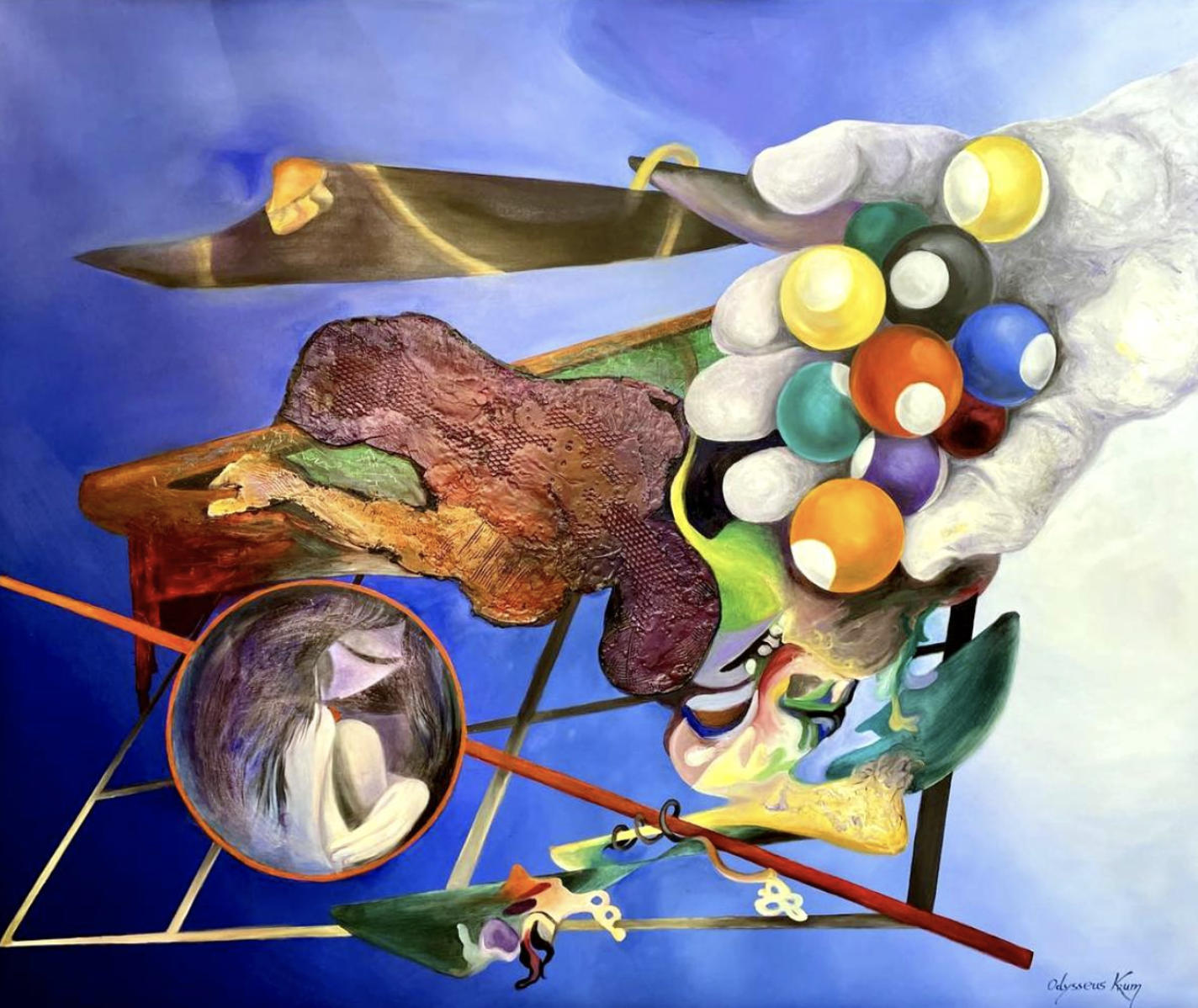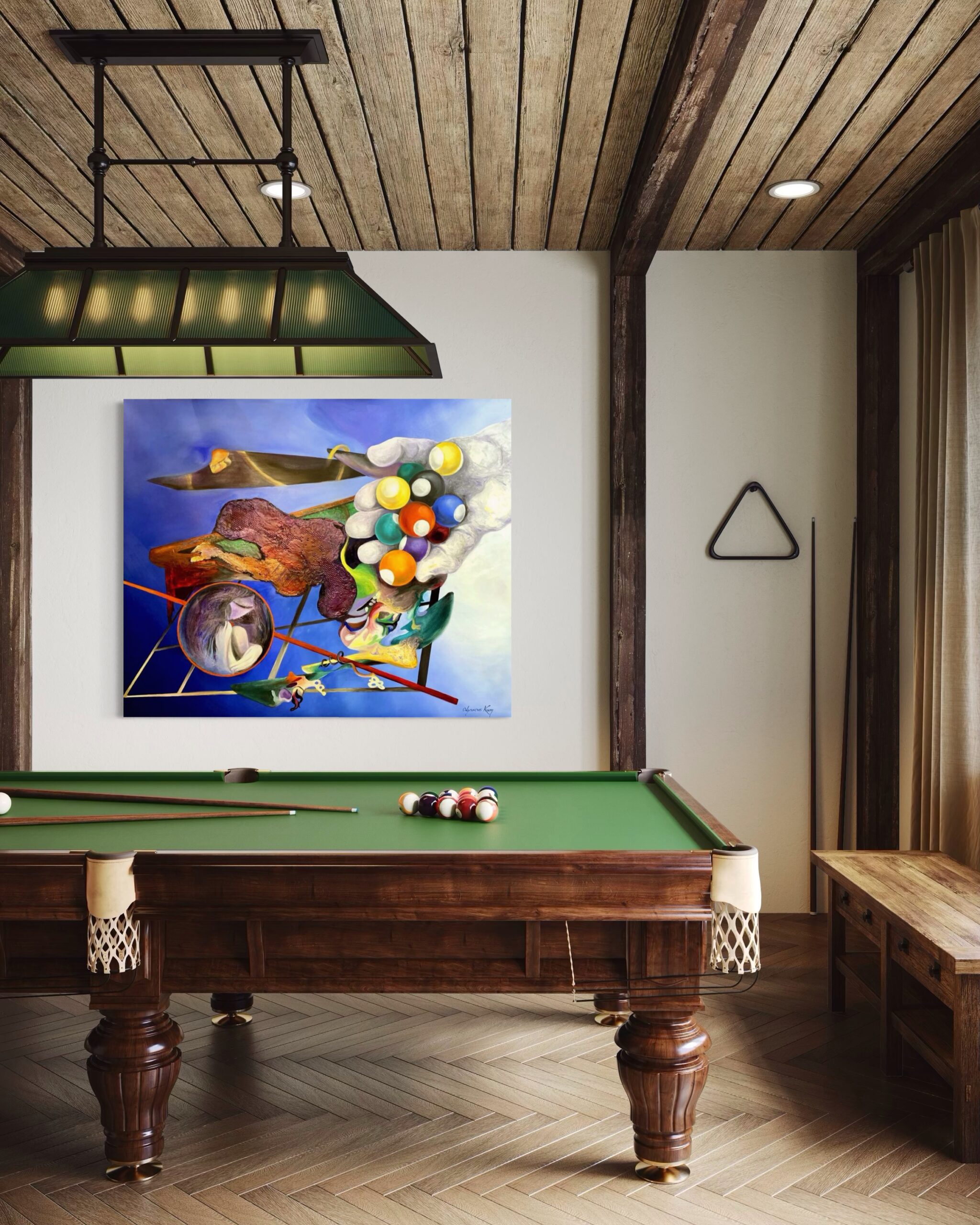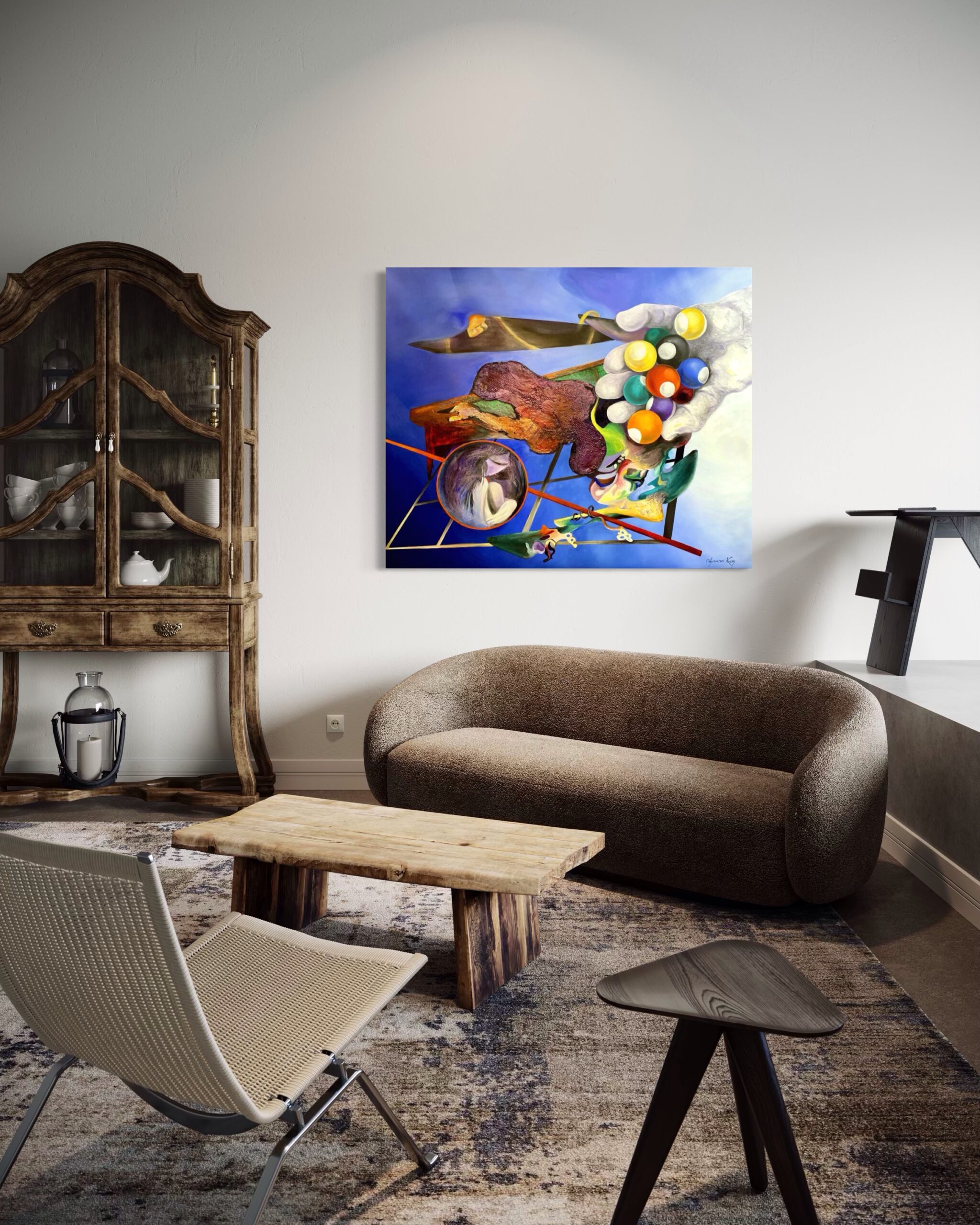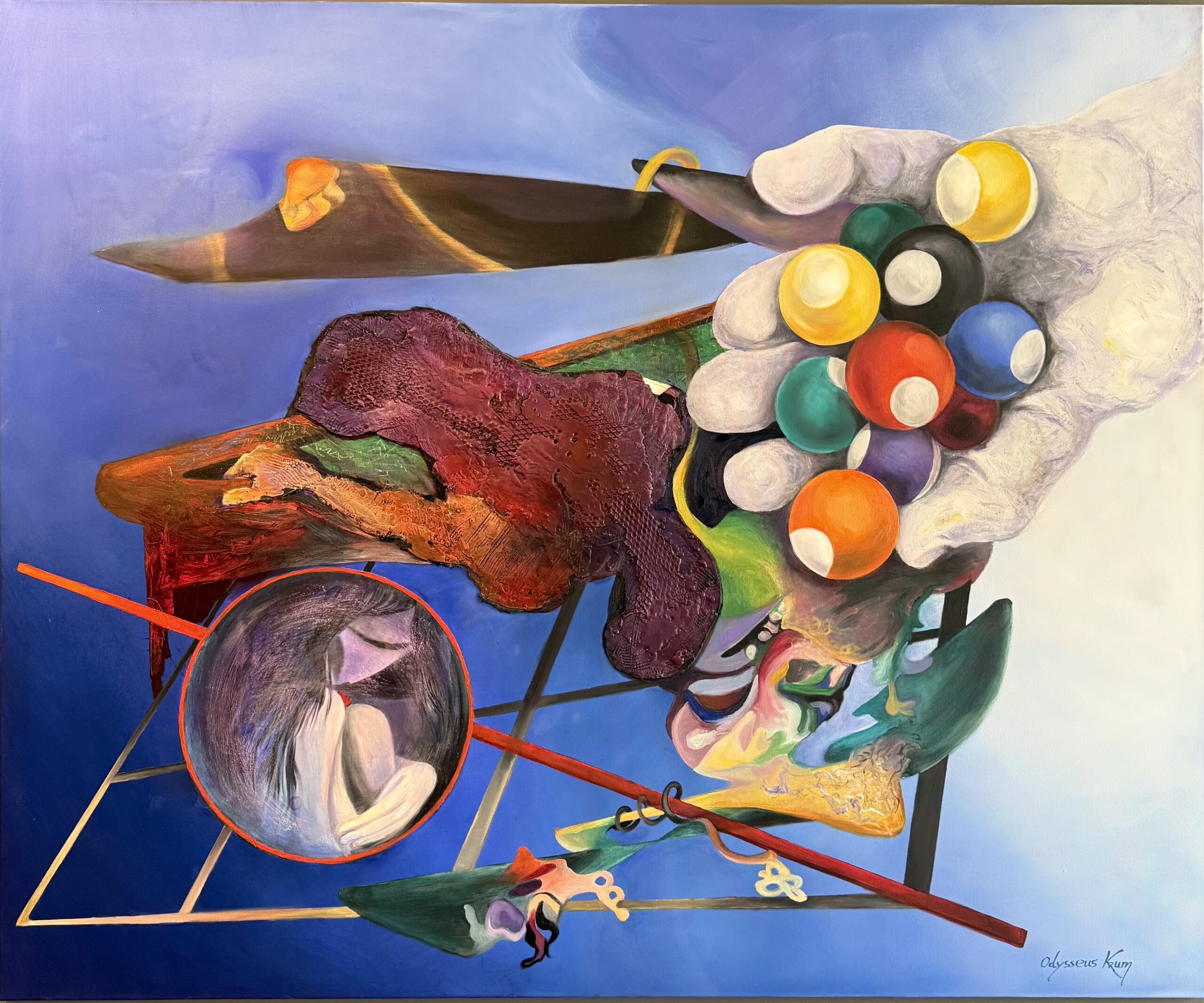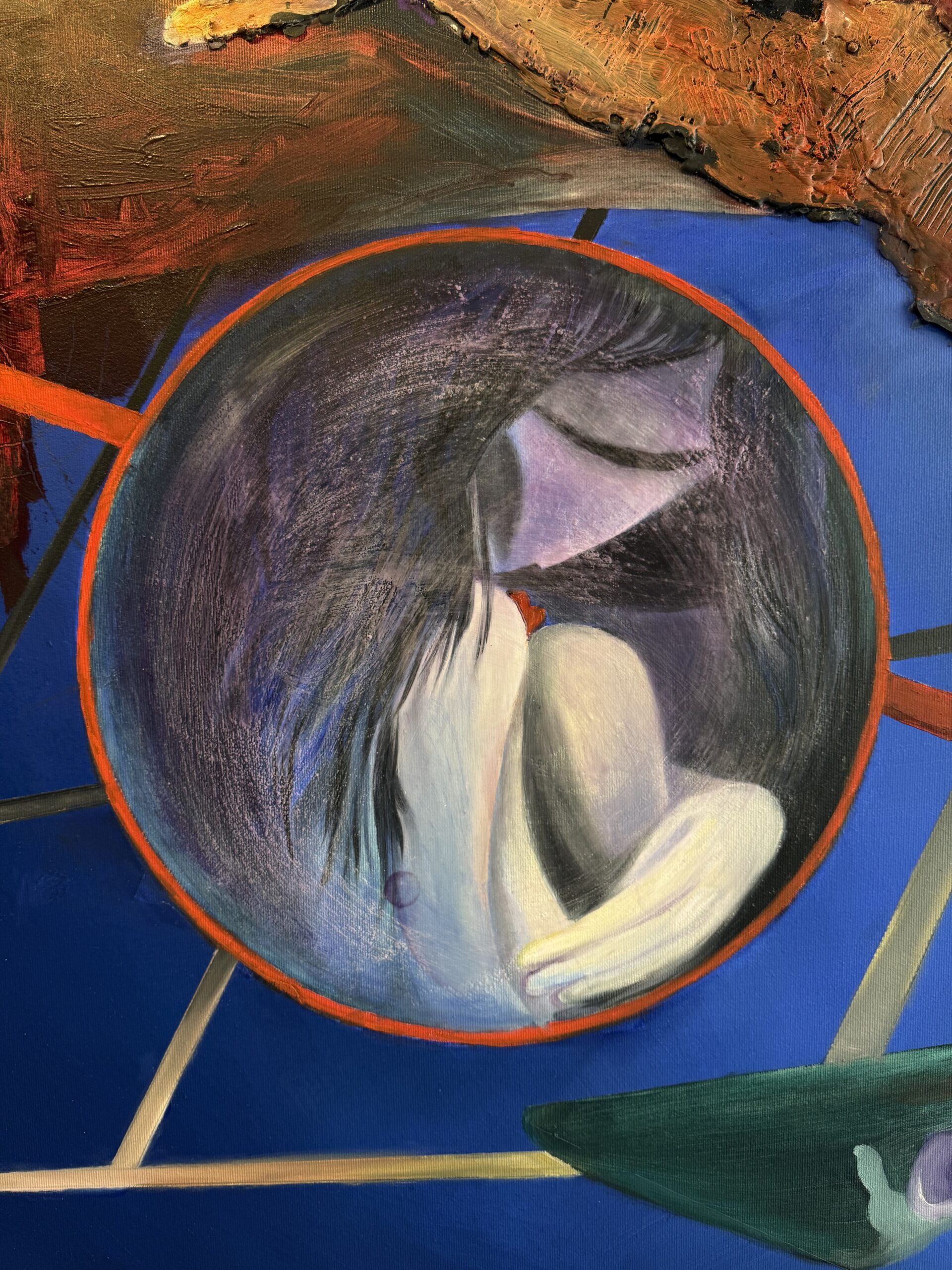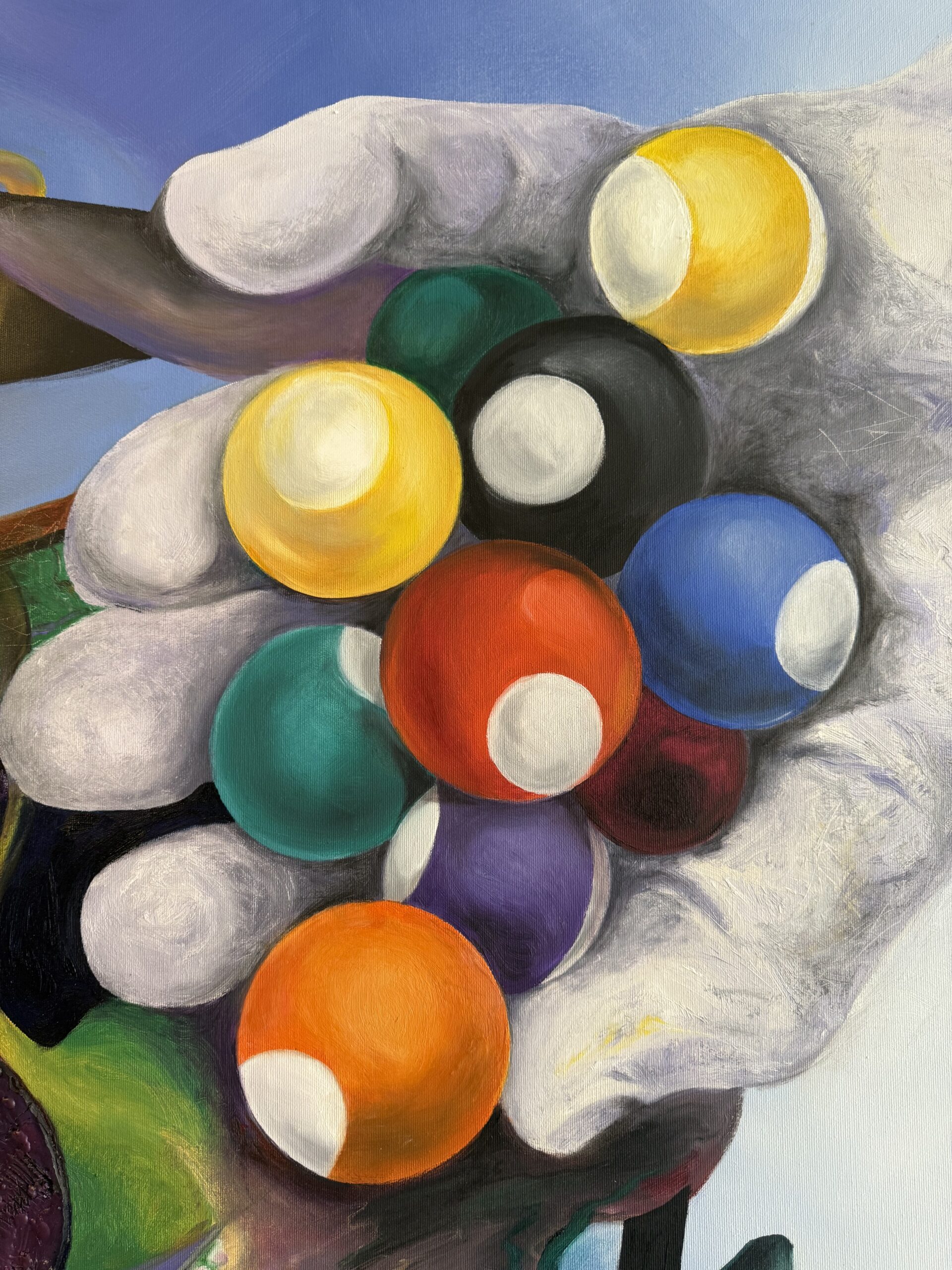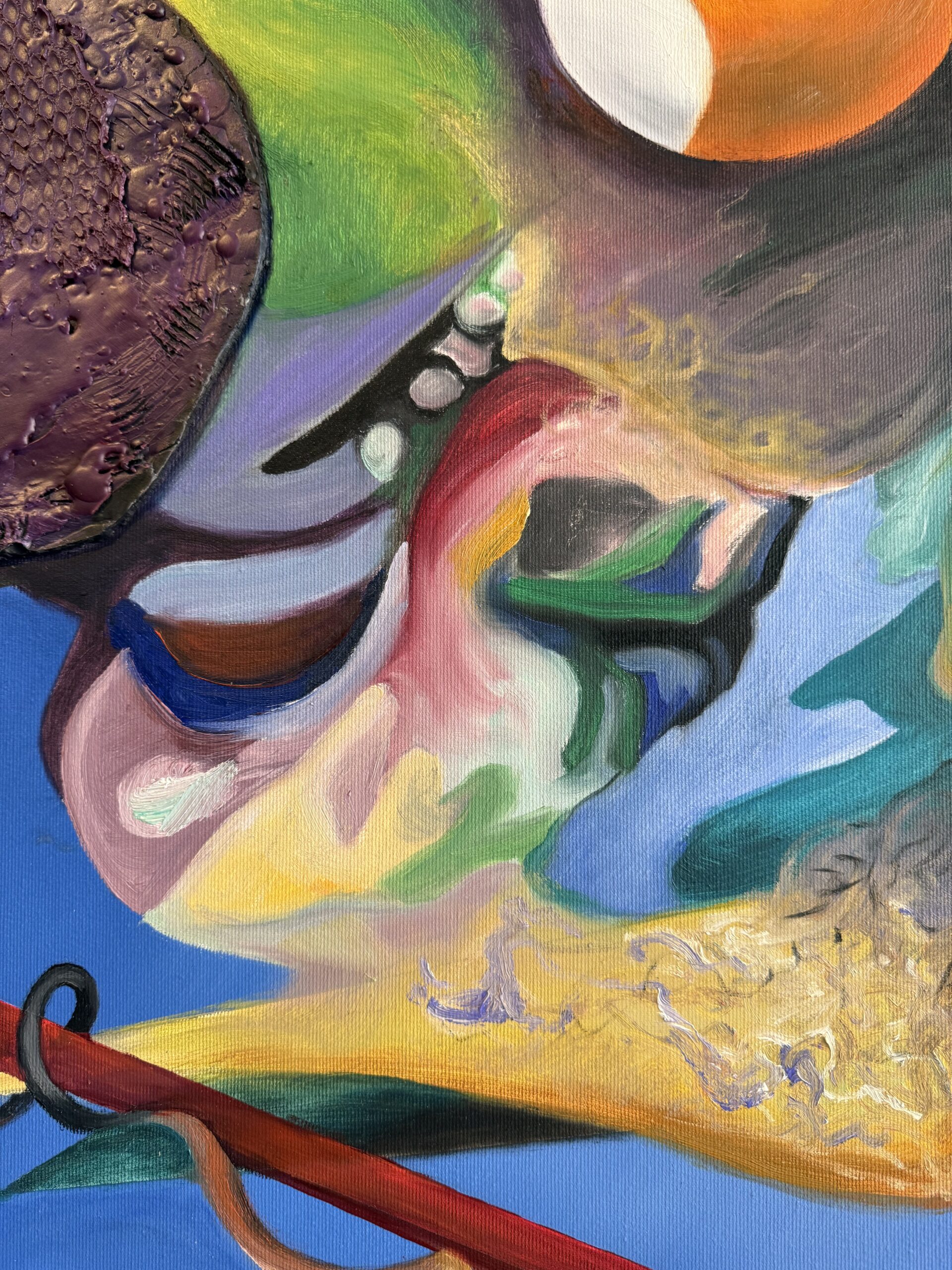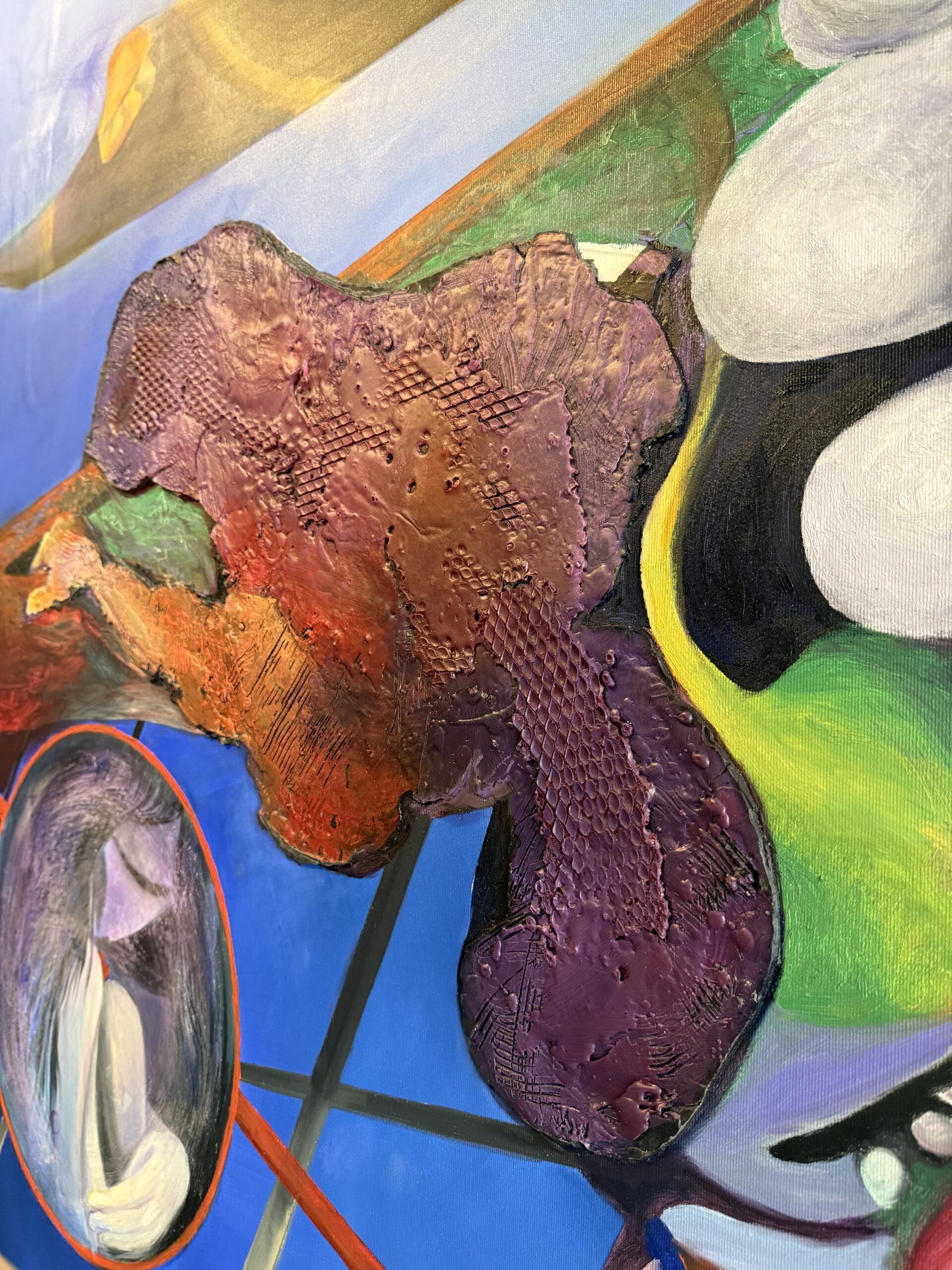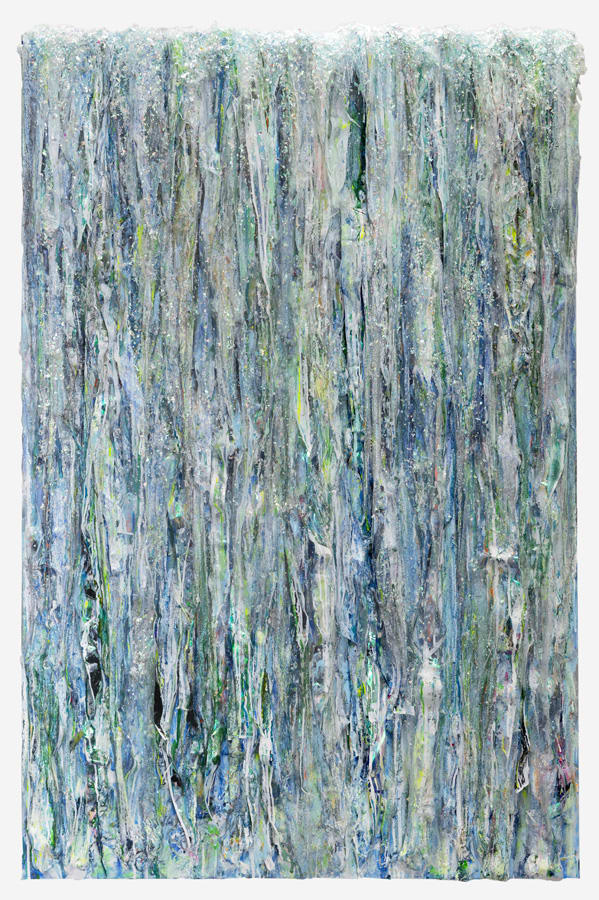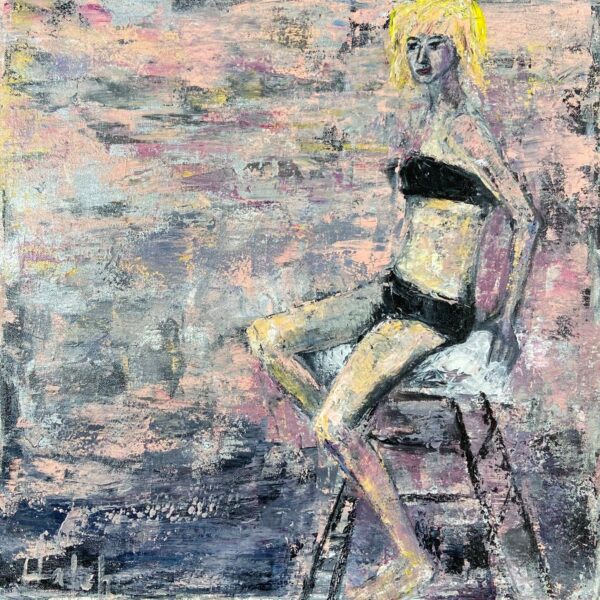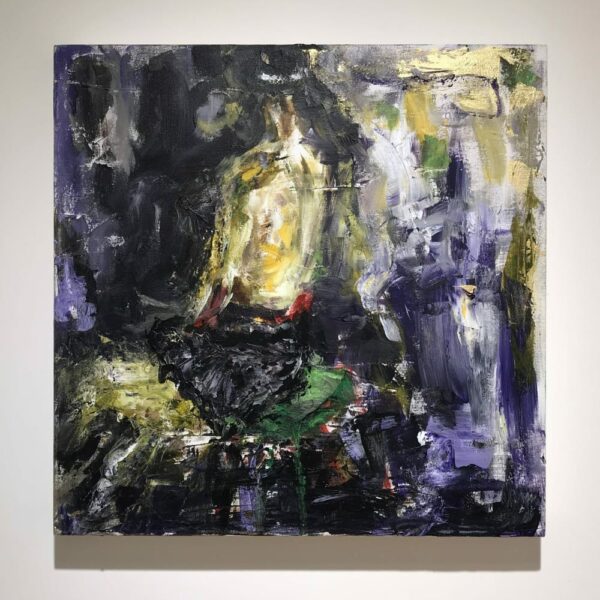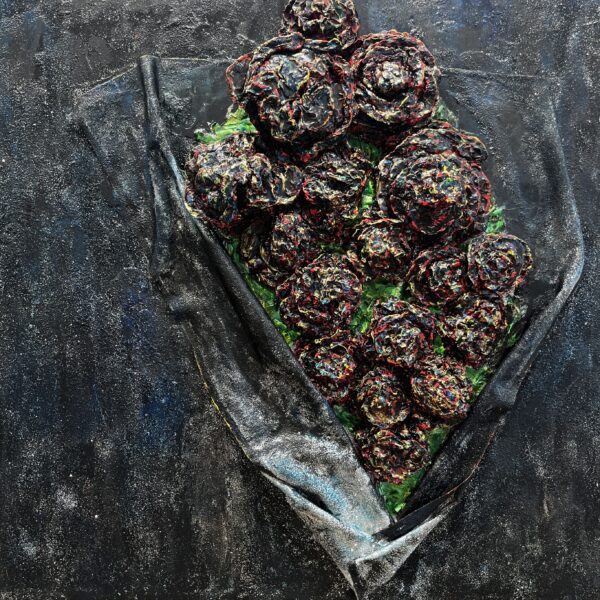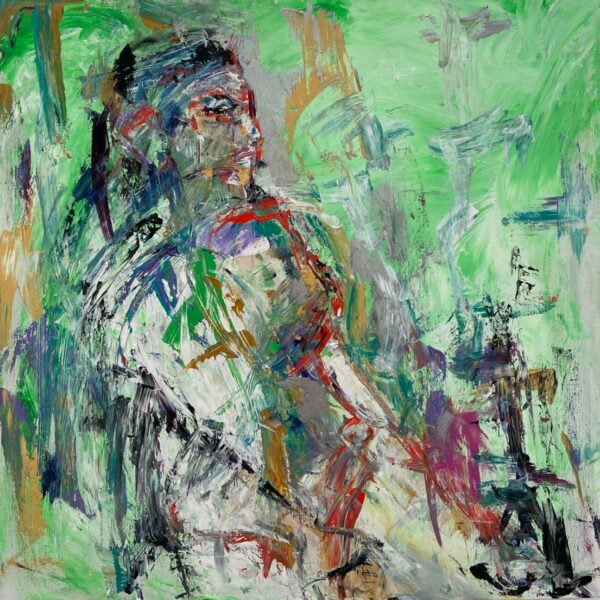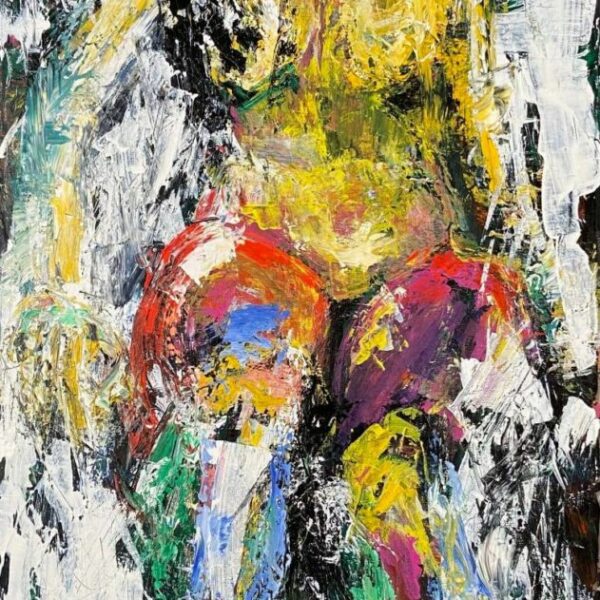Odysseus Krum
55 x 67″
Oil on Canvas
In “The Gambler,” Odysseus Krum crafts a mesmerizing surrealist painting that blurs the boundaries between reality, illusion, and chance. This dynamic composition immerses the viewer in a symbolic exploration of risk, strategy, and the psychological tension between control and chaos, inviting interpretations that resonate with both the art world and philosophical thought.
At the core of this visually arresting surrealist artwork, an oversized, spectral hand clutches a cluster of billiard balls, their reflective surfaces glistening with potential energy and inevitable consequence. Detached from any visible figure, the hand becomes an allegory for manipulation, destiny, and the unseen forces that govern life’s unpredictable nature. This central motif immediately evokes themes of gambling, decision-making, and the fine line between mastery and luck.
Surrounding this focal point, abstract distortions of a billiard table dissolve into fluid, dreamlike forms. The traditional structure of the game is disrupted and warped, emphasizing the fragile nature of order and precision in a world dictated by randomness. A sharp, golden blade slicing through the upper quadrant introduces an ominous element, contrasting with the organic, textured decay of a disembodied hand below—perhaps symbolizing sacrifice, ambition, or the high stakes of risk-taking.
In the lower left quadrant, a circular frame encloses a veiled, ghostly figure, whose gaze is turned away from the turmoil. This spectral presence exudes a sense of contemplation, regret, or the existential weight of choices made and paths taken. The juxtaposition of bold, vibrant hues with spectral, ethereal tones heightens the painting’s psychological depth, reinforcing its exploration of fate, free will, and the human tendency to wager everything on the unknown.
Through Krum’s masterful use of surrealist abstraction, vivid color palettes, and symbolic distortion, “The Gambler” transcends mere artistic representation, evolving into a visual allegory for chance, consequence, and the intricate dance between destiny and self-determination. The painting’s compelling composition and rich thematic layers make it a powerful statement piece in contemporary surrealist art, resonating with collectors, art enthusiasts, and those drawn to the philosophy of risk and reward.
In the end, “The Gambler” does more than depict a game—it poses a question that lingers long after viewing: Are we the ones making the moves, or are we merely the pieces in someone else’s game?

